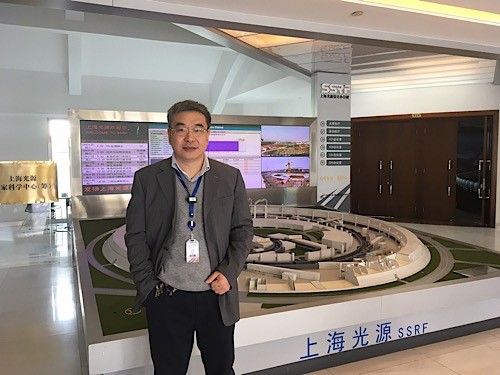
Zhentang Zhao, director of the Shanghai Institute of Applied Physics.
By Michael Banks in Shanghai, China
There was a noticeable step change in the weather today in Shanghai as the Sun finally emerged and the temperature rose somewhat.
This time I braved the rush-hour metro system to head to the Zhangjiang Technology Park in the south of the city.
The park is home to the Shanghai Synchrotron Radiation Facility (SSRF), which opened in 2007. The facility accelerates electrons to 3.5 GeV before making them produce X-rays that are then used by researchers to study a range of materials.
The SSRF currently has 15 beamlines focusing on topics including energy, materials, bioscience and medicine. I was given a tour of the facility by Zhentang Zhao, director of the Shanghai Institute of Applied Physics, which operates the SSRF.
As I found out this morning, the centre has big plans. Perhaps the sight of building materials and cranes nearby the SSRF should have given it away.
Over the next six years there are plans to build a further 16 beamlines to put the SSRF at full capacity, some of which will extend 100 m or so from the synchrotron.
Neighbouring the SSRF, scientists are also building the Soft X-ray Free Electron Laser (SXFEL) facility. The SSRF used to have a test FEL beam line, but since 2014 that has transformed to become a fully fledged centre costing 8bn RMB.
Currently, the 250 m, 150 MeV linac for the SXFEL has been built and is being commissioned. Over the next couple of years two undulator beamlines will be put in place to generate X-rays with a wavelength of 9 nm and at a repetition rate of 10 Hz. The X-rays will then be sent to five experimental stations that will open to users in 2019.
There are also plans to upgrade the SXFEL so that it generates X-rays with a 2 nm wavelength (soft X-ray regime) at a frequency of 50 Hz.
Guidelines
Show/hide formatting guidelines
this text was deletedwhere people live in harmony with nature and animals</q>
Some text